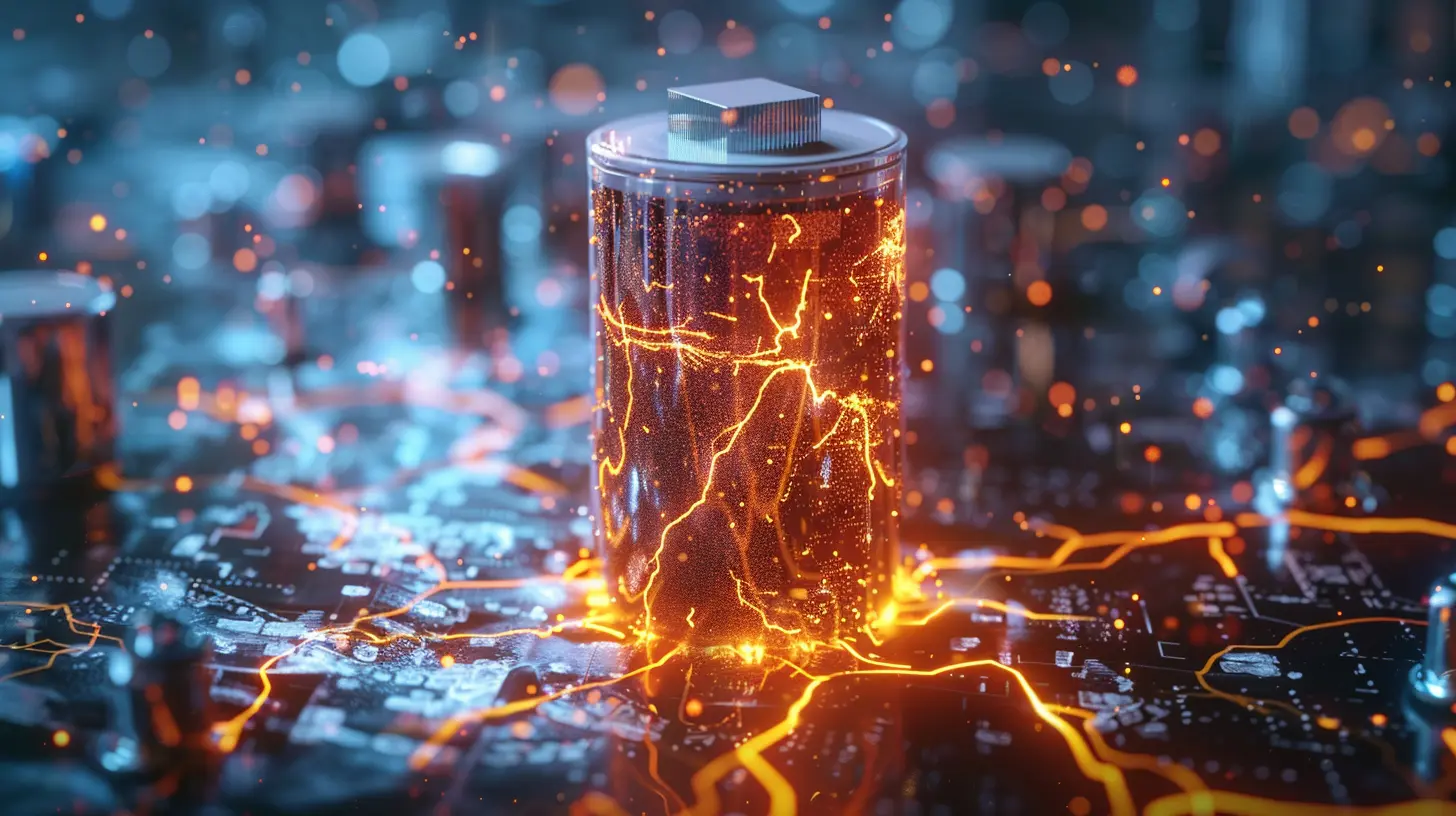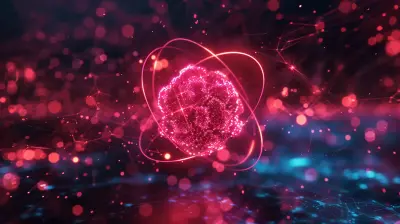The Role of Graphene in Next-Gen Battery Innovation
7 June 2025
When was the last time your phone battery actually lasted the entire day? Or your electric vehicle didn’t leave you with a hint of range anxiety? We've all been there. Waiting (and waiting) for batteries to charge, or watching them crumble after a year of use. But guess what? A single layer of carbon atoms arranged like chicken wire—yes, graphene—is about to flip that whole narrative on its head.
In today’s tech-fueled world, batteries are the backbone of just about everything—your smartphone, your laptop, your electric car, even those wireless headphones you can’t live without. And the demand for better, faster, longer-lasting batteries has never been more urgent. Enter graphene: a superhero material that's making scientists, startups, and tech giants sit up and take notice.
Let’s dive into why graphene is being hyped as the future of energy storage, how it compares to current tech, and whether it’s truly the key to next-generation battery innovation.
What Exactly Is Graphene?
Okay, quick science break. Graphene is a form of carbon—just like the graphite in your pencil. But what makes it freakishly amazing is its structure. It's a single layer of carbon atoms arranged in a two-dimensional honeycomb lattice. Think: a mesh made of atoms that’s one atom thick. Sounds simple, right? But don't be fooled by its minimalism.Here’s why everyone’s geeking out over it:
- It’s 200 times stronger than steel
- It’s an excellent conductor of electricity and heat
- It’s incredibly lightweight and flexible
Basically, if materials had a Marvel Universe, graphene would be Tony Stark with the technology of Iron Man and the strength of Hulk rolled into one.
Why Are Batteries So Stubbornly Average?
Before we get into how graphene changes batteries for the better, let's talk about why current batteries, especially lithium-ion, have hit a wall.Lithium-ion batteries have powered our devices for decades now. They're like that old reliable friend who’s always there but also kind of stuck in their ways. They:
- Charge slowly
- Degrade over time
- Don’t store that much energy
- Are prone to overheating and, occasionally, catching fire (remember the Samsung Note 7 fiasco?)
The issue? Materials. The anodes and cathodes in lithium-ion cells aren’t particularly fast or efficient at moving ions back and forth. This bottleneck is exactly where graphene steps in and says, “Hold my electrons.”
How Graphene Disrupts Battery Tech
Graphene can supercharge batteries—literally. It’s not just about making batteries better, it’s about redefining what batteries can be. Here are the game-changing ways graphene is shaking things up.1. Faster Charging Times
Let’s be honest: waiting for your phone or EV to charge is a modern-day torment. Graphene’s high conductivity allows electrons to move much faster than in traditional materials. That means graphene-enhanced batteries can charge in a fraction of the time.Some prototypes claim full charges in under 15 minutes. Imagine topping off your EV while grabbing coffee—without planning your entire schedule around charging stations.
2. Greater Energy Density
Graphene can hold more electric charge per unit of mass. That’s science-speak for: you get more juice without adding extra bulk. For EVs, this could mean significantly longer ranges without stuffing the car full of heavy battery packs.More capacity. Less weight. It’s like packing for a vacation and still having room for souvenirs.
3. Enhanced Life Cycle
Traditional batteries degrade with every charge cycle. After a few hundred cycles, most start underperforming. Graphene’s stability means batteries last much longer—some estimates say up to twice as long as today’s lithium-ion options.That’s less battery waste and fewer replacements. Good for your wallet and the planet.
4. Improved Thermal Management
Ever had your phone heat up like it’s prepping for lift-off? That’s because standard materials don’t dissipate heat well. Graphene is fantastic at thermal conductivity, which means it keeps batteries cool, improving both safety and performance.
Graphene Batteries in the Real World: Are We There Yet?
All this sounds great on paper, but is it real-life ready? Well, let’s talk reality.Several companies and research institutes are deep into developing graphene-based batteries. Here are a few exciting developments:
Samsung Advanced Institute of Technology (SAIT)
Samsung developed a "graphene ball" that, when used in lithium-ion batteries, improves capacity by 45% and charging speed by 500%. Translation? Phones that last a day on 20 minutes of charging.Tesla and Graphene Rumors
While Elon Musk hasn’t confirmed anything official, speculation runs high that Tesla is experimenting with graphene-enhanced tech for next-gen battery solutions—especially given their battery research investments.NanoGraf and Skeleton Technologies
Startups like NanoGraf in the U.S. and Skeleton Technologies in Europe are pushing hard on graphene innovations. NanoGraf’s tech, for instance, can allegedly increase battery energy density by more than 30%.Graphene vs. Lithium-ion: A Face-Off
| Feature | Lithium-Ion | Graphene-Enhanced Batteries ||----------------------|------------------------|-------------------------------|
| Charging Time | 1–3 hours | 10–20 minutes |
| Energy Density | Good | Excellent |
| Battery Lifespan | 300–500 cycles | 800–1,500+ cycles |
| Heat Management | Average | Outstanding |
| Safety | Moderate risk (fires) | Much safer (cooler temps) |
| Cost (currently) | Lower | Higher (but falling fast) |
The verdict? Graphene isn't just better—it’s on another level. But the price tag and manufacturing complexity are hurdles to mass adoption.
Challenges Holding Graphene Back
Sounds dreamy, right? But real talk: graphene isn’t mainstream yet, and there are a few reasons why.1. Production Cost
Right now, making high-quality graphene at scale is pricey and complex. While costs are falling, it’s still not low enough for budget smartphones or mass-market EVs.2. Manufacturing Compatibility
Most factories are set up for traditional batteries. Integrating graphene would mean retooling or upgrading those processes—which is expensive and time-consuming.3. Hype vs. Reality
Let’s face it: graphene has been "the next big thing" for over a decade. Skeptics argue that it’s always promising and never delivering. The good news? Patents, funding, and real prototypes are increasing. So while it’s been a slow burn, it’s catching fire now.The Environmental Edge
There’s another side to this story—one that matters more than ever. Graphene batteries could be much greener than lithium-ion tech.- Less waste: Longer life means fewer discarded batteries.
- Recyclability: Graphene can be created from carbon-rich waste like methane or even biomass.
- Lower resource strain: If graphene can reduce our reliance on rare earth elements and heavy metals, that’s a win for sustainability.
In a world inching toward electric everything, that’s a big deal.
What’s Next?
We're still in the early innings of the graphene battery game, but the momentum is real. Startups are raising millions, giants like Samsung and Huawei are filing patents, and researchers are making breakthroughs that seemed like sci-fi even a few years ago.Here’s what to watch for in the coming years:
- Commercial EV batteries with graphene components
- Rapid-charging mobile devices hitting the market
- Graphene solid-state batteries with both safety and energy advantages
Final Thoughts: Is Graphene the Future or Just a Flash in the Pan?
Let’s be clear—graphene isn’t fairy dust. It’s not going to make your dead phone spring to life with a snap of your fingers. But what it does offer is a major leap forward, not just an incremental upgrade.Will it replace lithium-ion overnight? No. But could it become the backbone of next-generation batteries across industries—from smartphones to solar storage to EVs? Absolutely.
So the next time your device takes forever to charge or your battery drains before lunch, just remember: change is coming. And it's only one atom thick.
all images in this post were generated using AI tools
Category:
Technology InnovationAuthor:

Adeline Taylor
Discussion
rate this article
3 comments
Annette Jones
Graphene: because who needs regular batteries when you can power up with superhero technology?
June 21, 2025 at 10:40 AM

Adeline Taylor
Thanks! Graphene's unique properties indeed hold the potential to revolutionize battery technology, making energy storage faster, lighter, and more efficient—like superhero tech for our devices!
Paula Cooper
As we stand on the brink of a battery revolution, graphene whispers secrets of unprecedented energy storage—will it unlock our electrifying future, or harbor hidden challenges?
June 18, 2025 at 11:01 AM

Adeline Taylor
Graphene holds immense potential for revolutionizing energy storage, but we must carefully navigate its challenges to fully realize its transformative impact.
Benjamin Kirk
In the realm of energy's dance, Graphene weaves a future bright, A symphony of swift electrons, Harnessing power with grace and might. Batteries reborn, in innovation's embrace, A spark of potential, the world will ignite.
June 17, 2025 at 11:59 AM

Adeline Taylor
Thank you for your poetic reflection! Graphene indeed holds immense promise for revolutionizing battery technology and enhancing energy efficiency.



